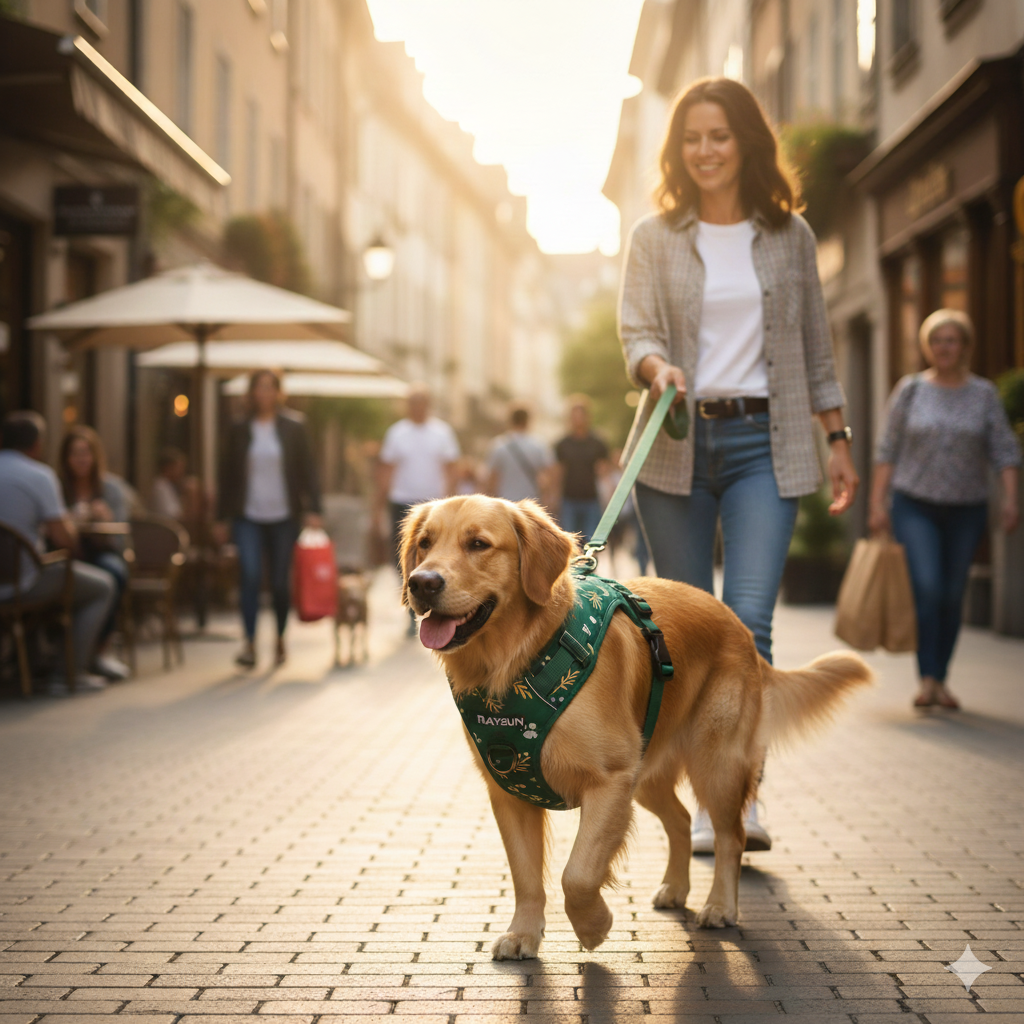Leaving your dog's harness on seems so convenient. But this simple habit could cause hidden problems. Is this daily shortcut actually harming your best friend's health and comfort?
Yes, it is generally bad to leave a harness on your dog all day. Constant wear can lead to painful skin irritation, chafing, and matted fur. It also removes the important behavioral cue that a harness means it's time for a walk, and poses safety risks if unsupervised.
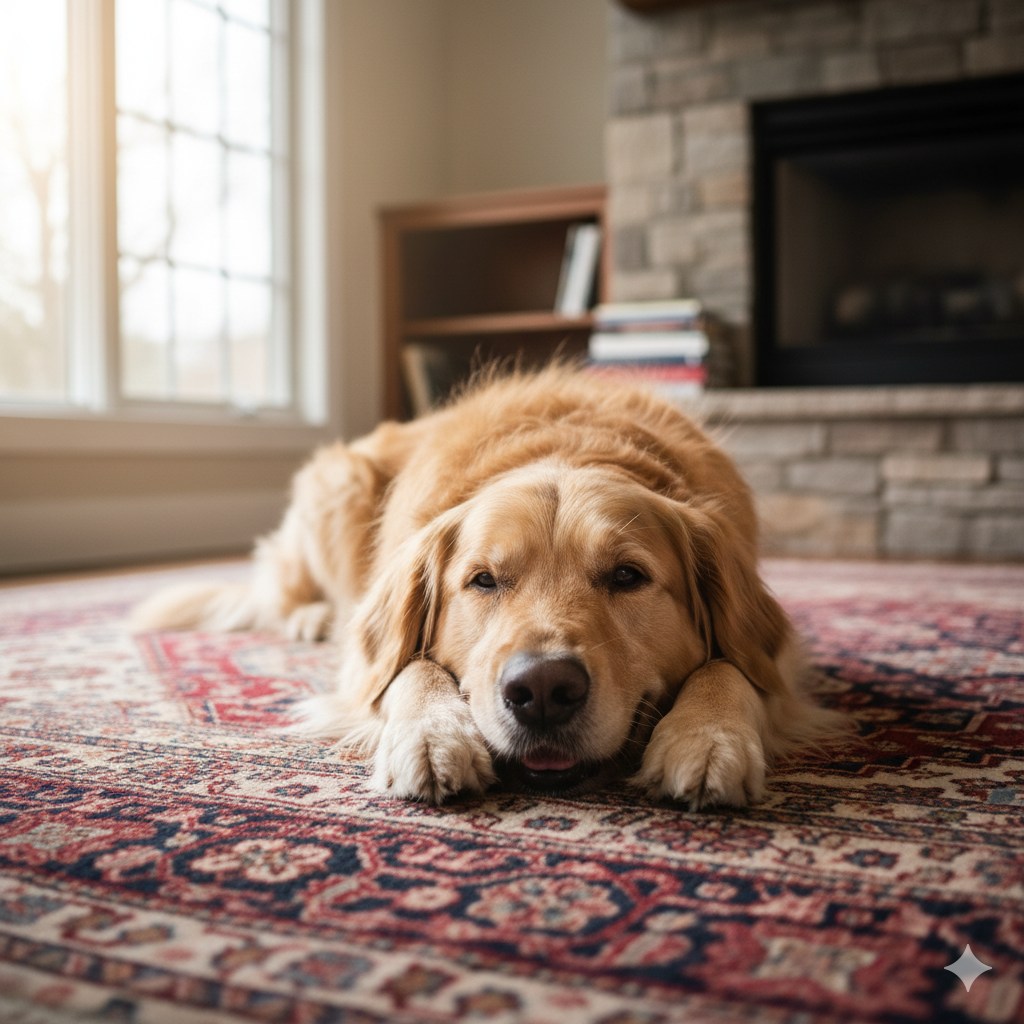
In all my years designing dog gear, I’ve seen how the quest for convenience can sometimes overlook a dog's basic needs. A harness is a fantastic tool for walks and adventures, but it’s not meant to be clothing. It's like wearing your running shoes to bed; it's just not comfortable or practical. For designers like us, understanding the "why" behind this is critical to creating better, safer products.
What are the physical risks of all-day harness wear?
You've chosen a well-fitted harness, so you assume it's comfortable. But constant, day-long pressure and friction can create painful skin issues you might not notice until it’s too late.
The main physical risks are skin damage and discomfort. Straps can cause chafing and sores, while trapped moisture can lead to hot spots or bacterial infections. Under the harness, a dog's fur can become severely matted, pulling on the skin and causing pain.
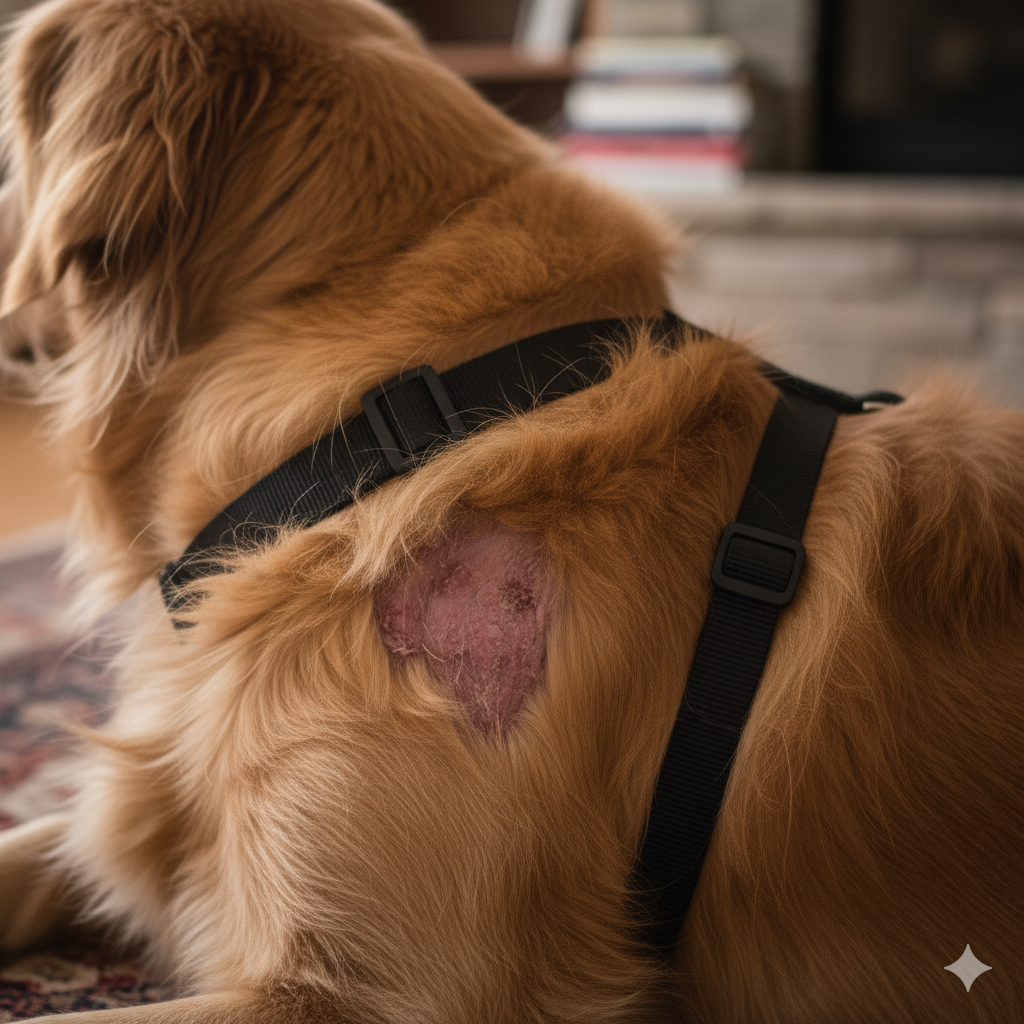
I once had a client who was developing a new line of "all-day" harnesses. Their first prototype caused significant issues during wear-testing. The problem wasn't a bad fit, but the consequence of constant contact. This experience taught me a lot about the subtleties of material interaction with a dog's skin and coat.
Friction Burns and Chafing
Even the softest webbing can act like sandpaper over time. The constant micromovements of a dog breathing, stretching, and sleeping create friction. Critical areas like behind the front legs (the armpits) and across the chest are highly susceptible. As designers, we must consider the webbing's edges. A sharp, heat-sealed nylon edge is much more likely to chafe than a smoothly woven or fabric-wrapped edge.
Trapped Moisture and Hot Spots
A harness creates a layer over the skin that traps heat and moisture. This is especially true for harnesses with wide, padded chest plates. This humid environment is a perfect breeding ground for bacteria and yeast, leading to painful skin infections known as hot spots. This is why material choice is so vital. I always recommend using breathable materials like air mesh in my designs to help with ventilation.
Matting and Hair Loss
Underneath the straps, the fur doesn't have a chance to shed or move naturally. The pressure and rubbing can quickly cause deep, painful mats to form, especially in long-haired or double-coated breeds. These mats pull on the skin and can be very difficult to remove. In some cases, the constant pressure can also lead to permanent hair loss in those areas.
Can leaving a harness on cause behavioral issues?
You use the harness to signal it's "walk time." But what happens to that signal when the harness never comes off? Constant wear can dilute this important cue and create unexpected confusion.
Yes, it can create behavioral problems. When a harness is always on, it loses its special meaning as a signal for a walk. This can diminish their excitement and cooperation. Some dogs also find the constant pressure irritating, leading to anxiety or destructive chewing behaviors.
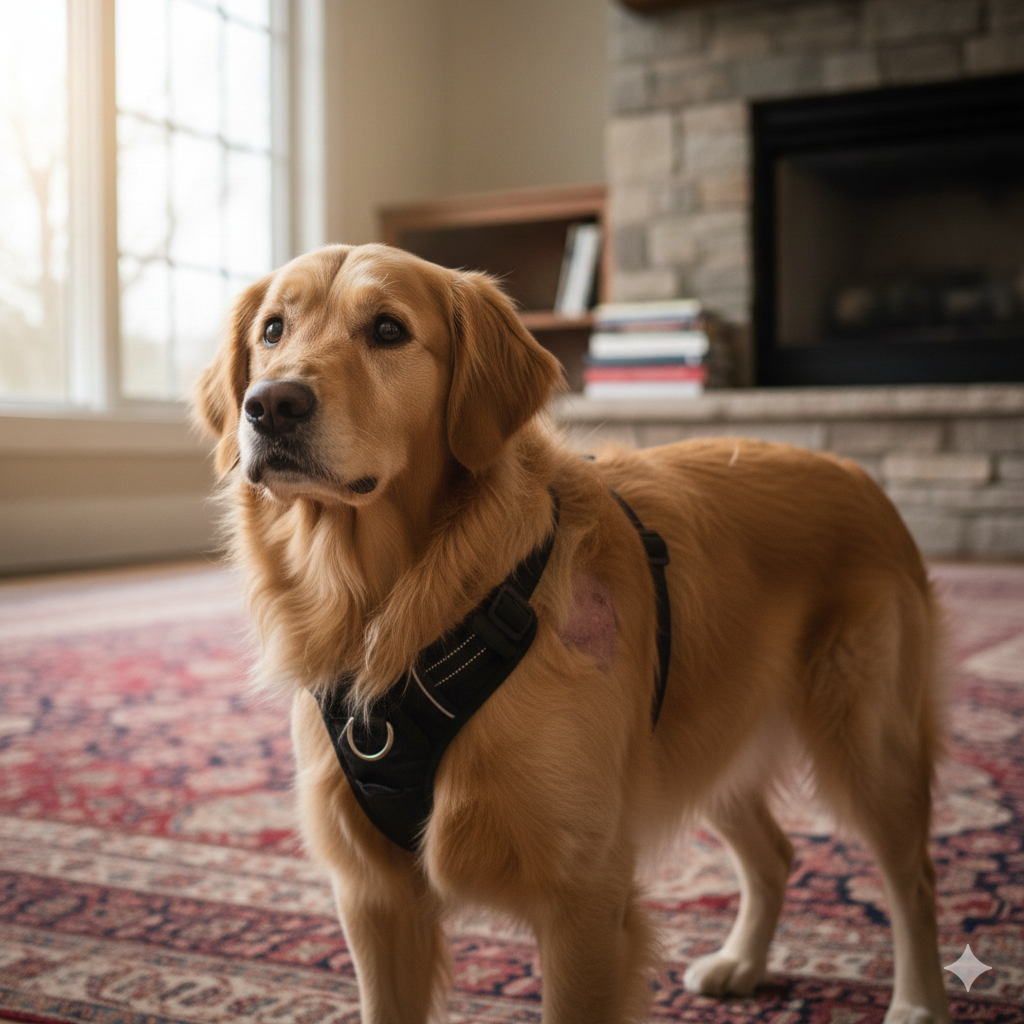
We design products to create clarity and positive associations, and a harness is a perfect example. The act of putting it on should build happy anticipation. Leaving it on all the time erases that communication.
Diluting Important Cues
The ritual of getting the leash and harness is a powerful form of communication with your dog. It says, "Something fun is about to happen!" I’ve seen this in my own dogs. The moment they hear the jingle of the hardware, they get excited. When a dog wears the harness 24/7, this clear signal is lost. They no longer associate it with the special event of a walk, which can make them less responsive when it's actually time to go. It just becomes background noise.
Creating Low-Level Stress
Imagine wearing a restrictive backpack all day, every day. Even if it fits well, you'd always be aware of it. For some dogs, the harness represents a state of control or restraint. Never getting a break from this sensation can cause a low level of chronic stress or anxiety. This can manifest as restlessness or irritability.
Safety and Chewing Risks
A bored or anxious dog with a harness on is a dog with a built-in chew toy. I've heard too many stories of dogs chewing through straps or plastic buckles while their owners were out. This not only destroys expensive gear but also poses a serious risk of ingestion and intestinal blockage. As designers, we know no material is truly "indestructible," so unsupervised wear is a risk we should always advise against.
What harness features are best for extended wear?
Sometimes, you need to keep a harness on for a longer trip, like a full day of hiking. How do you design or choose a product that prioritizes comfort when extended wear is unavoidable?
For necessary extended wear, choose harnesses made from lightweight, breathable, and quick-drying materials. Look for a minimalist design with padding only at key pressure points, multiple adjustment options for a perfect fit, and a Y-shaped neck to ensure free shoulder movement.
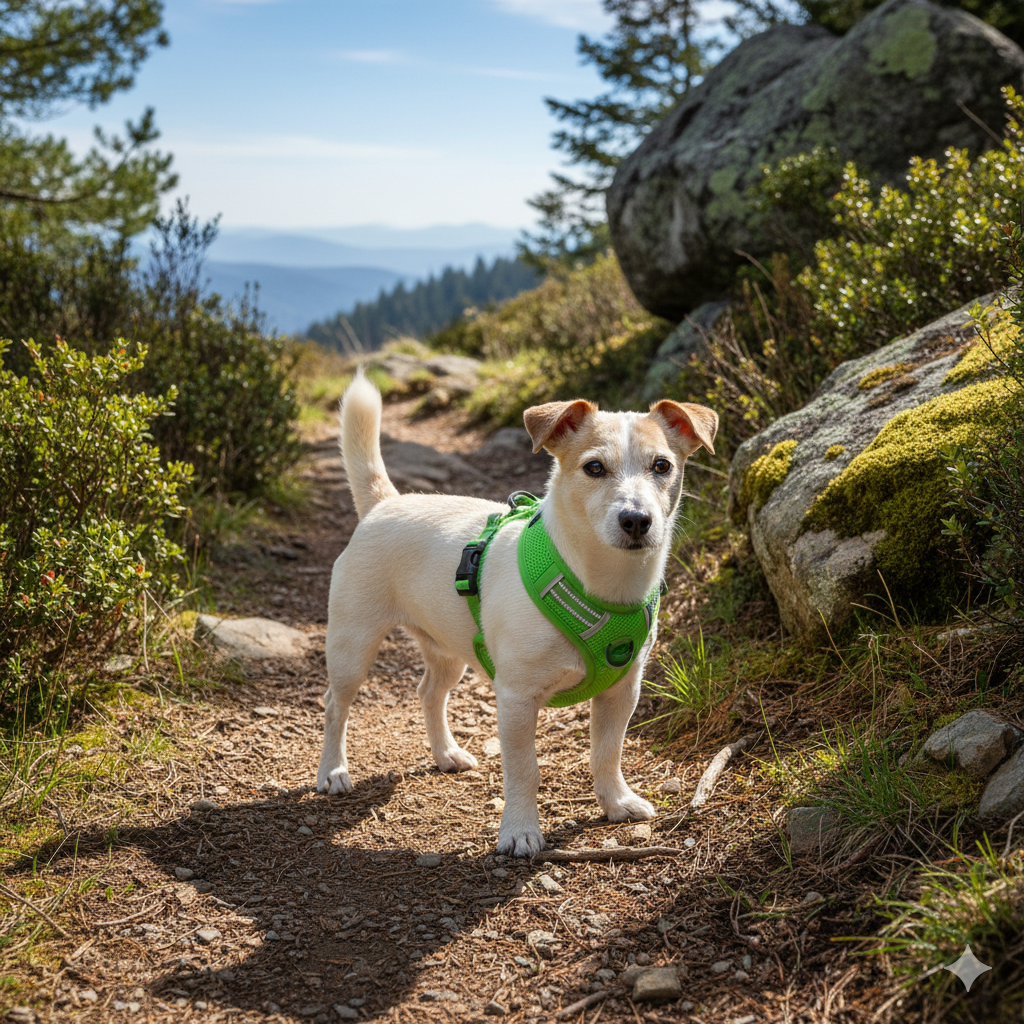
This is a design challenge I enjoy. It's about creating a piece of functional gear that feels like it’s barely there. When I'm consulting on a performance harness, I focus on three key areas: materials, ergonomics, and hardware.
Smart Material Choices
For a hiking or adventure harness, standard nylon webbing is often too heavy and holds water. I steer designers toward technical materials. Spacer mesh or "air mesh" is brilliant because its 3D structure allows for excellent airflow, keeping the skin cooler and drier. Ripstop fabrics are lightweight yet durable, and using soft, brushed liners at potential friction points makes a huge difference in comfort over a long day. The goal is to build a harness that can get wet and dry quickly on the dog.
Ergonomics for Freedom of Movement
The harness must work with the dog's body, not against it. This is where I stress the importance of a Y-shaped front that clears the shoulder blades. You want the dog to have a full, natural range of motion. Minimalist designs are often better for long wear. Instead of a large, bulky chest plate, a well-engineered system of straps can distribute pressure effectively without covering too much of the dog's body, which helps with cooling.
| Feature | Ideal for Extended Wear | Avoid for Constant Use |
|---|---|---|
| Material | Breathable mesh, quick-drying polyester | Heavy nylon, non-breathable materials |
| Padding | Strategic, lightweight foam at pressure points | Bulky, thick padding that traps heat |
| Design | Y-shaped front, minimalist strap system | T-shaped front, large coverage panels |
| Hardware | Lightweight aluminum or titanium | Heavy steel or oversized plastic buckles |
Ultimately, even the best-designed adventure harness should be taken off for regular rest breaks to check the skin and let it breathe.
Conclusion
Harnesses are essential tools for walks and adventures, not everyday clothing. Remember to remove them when your dog is inside to protect their skin, support clear training cues, and ensure safety.
Cindy Long is the Sales Manager of Raysunpets and a pet lover with over 12 years of experience in exporting pet products. She specializes in providing customized dog chest carriers, leashes and pet accessory solutions for the European and American markets, always focusing on the real needs of customers and pets, and is committed to creating high-quality, practical and comfortable products that allow fur kids to live happier lives.

